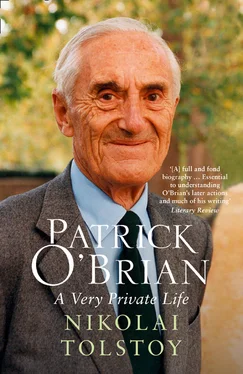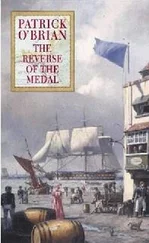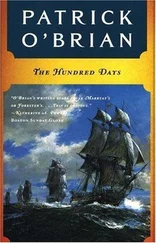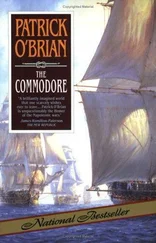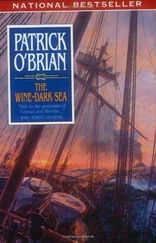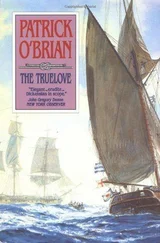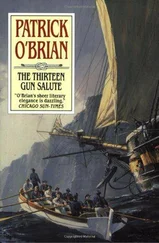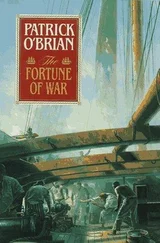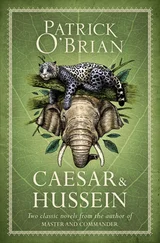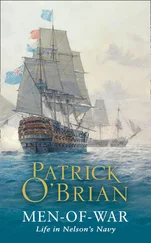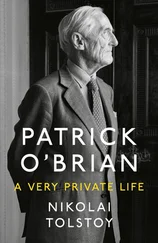The personal application of the story ‘A Minor Operation’, which is one of those published in the collection, speaks for itself. A young English couple come to live in an old French town by the sea. We learn that ‘they were virgins; virgins from principle, mystic and practical’. They are very poor, but so well liked by the inhabitants that they are continually sustained by regular gifts of food. Much of this popularity they put down to the ‘affectionate, well-mannered dog they had brought with them’. After a while Laurence is troubled by a severe affliction to his hand. Eventually an operation becomes necessary, which unexpectedly proves so sanguinary that the surgeons depart, leaving their patient for dead. However, he is not. Arising from the operating table, the victim races frantically back to his apartement , brutally kicks their beloved dog downstairs, and apparently (it is not entirely clear) kills his wife.
Patrick wrote the story on 12 and 13 June 1951, originally entitling it ‘A Nice Allegory’, and later ‘Hernia, Stranguary and Cysts’. That the couple is Patrick and my mother, and the dog their Buddug, is evident from the opening description. Three weeks earlier, my mother had written in her diary: ‘P. showed Dr Delcos swelling on his hand. It has to be removed.’ Five days later ‘P. had his hand done, fainted, poor P., is splinted & bound & in a sling.’ For over a fortnight he continued in great pain, suffering continual discharges of pus from the infected wound, and enjoying little sleep.
It looks as though this protracted suffering led Patrick, as in ‘The Lemon’, to reflect on how far an inordinate degree of psychological distress or physical pain might wholly distort a man’s nature, exposing the perilous fragility of the mind’s control over destructive elements of the subconscious. The threat is emphasized by the frenzied patient’s violent assault on the very beings to whom he is closest.
There exists what may be a tentative draft of the tale in one of Patrick’s notebooks. There he contemplates writing the story of ‘A very sensible childless pair [who] decide that the husband had best beget one on a healthy girl’. This he does, with predictably stressful effect on the wife. This perhaps appearing too trite or unrealistic a theme, it seems Patrick converted it into a savage melodrama, whose principal content derived from his own experience.
Another story written at this time is ‘William Temple’, which remains unpublished. Ultimately a precursor to Patrick’s novel Richard Temple (1962), it begins on an unmistakably autobiographical note. Like Patrick during his wartime service with Political Warfare Executive, Temple is employed by a branch of Intelligence whose members do not normally operate in occupied Europe. Again, I suspect like Patrick himself, ‘he had often pictured to himself William Temple as one of that great secret army that was being built up in France’. Unexpectedly, he is selected to be dropped on a special mission to the French Resistance ‘in the mountains between Spain and France’. After a realistic account of his reception by the maquis, he is diverted into a hunt for a magnificent boar, which he finally tracks down and shoots.
The story is very much longer than others written at this time, being reckoned by Patrick at 23,500 words. The indications are that it was at first intended as a novel, which for some reason came to an unanticipated halt. Possibly, with the (symbolic?) death of the boar, he simply found further inspiration lacking. At any rate, he decided to include it among the collection submitted to Fred Warburg. In view of its exceptional length, it was divided into two parts, oddly entitled ‘A Pair I’ and ‘A Pair II’. The adventure is fluently narrated, but from its length ill-suited to a collection of short stories.
Disheartened by Warburg’s rejection, Patrick brought his short-story writing to an abrupt close. Not until well over a year had passed did he attempt another. As his publisher pointed out, the twenty tales are widely varied in quality. Without straying into excessive analysis, it has to be said that in several cases the plots appear somewhat contrived, and I am inclined to suspect the baneful influence of Somerset Maugham in what appears to be Patrick’s apparent need to round off with a quirky or violent conclusion. Again, several stories are driven by a desire to sublimate personal fantasies, wish-fulfilments or resentments which do not always fully accord to dramatic requirement. More, too, might perhaps have been made of those descriptive passages at which Patrick excelled, evoking the Catalan people and their harsh but beguiling landscape.
Another possibility for generating desperately needed additional income occurred to Patrick at this time. In November 1951 Curtis Brown passed an enquiry to Fred Warburg: ‘Patrick asks if I know of any books which a publisher would like him to translate from the French. It occurs to me that he might be a very good translator. Have you by any chance any such book in mind?’
Warburg could offer nothing, and the proposal fell by the wayside. Eventually Curtis Brown was to be proved right, and Patrick became an admired translator of contemporary French writing. But another ten years were to pass before he was afforded opportunity to undertake that lucratively dependable employment.
Over the winter of 1950–51 the couple’s hopes were largely founded on the success of Three Bear Witness , for which Warburg had expressed such high regard. It was a desperately worrying time. In January 1952 my mother lamented that: ‘The year continues to go badly: Seckers don’t want W[illy Mucha]’s maquettes. Very much gloom.’ They were eager to have the dustjacket illustrated by their friend. At the beginning of the next month ‘Secker sent list with T.B.W. in it.’ A month later the strain had become almost unendurable: ‘I could not sleep for thinking of TBW, copies being liable to arrive any time now.’ Eventually, on 22 April, ‘TBW came; parcel on the stairs. P. infinitely kind, sat by me.’
Unhappily, the excitement proved ephemeral. Press reception in Britain was muted, and although one or two reviewers voiced approval of the book’s finer qualities, it slipped rapidly from public consciousness. For all their exceptional resilience and recurrent surges of optimism against hostile odds, for much of the time during the first two and a half years of their life in Collioure, Patrick and my mother found it hard to sustain their spirits. Foremost among concerns impossible to overlook was the grinding poverty of their existence, which continued poised on the brink of disaster.
Looking back, five months after their arrival in Collioure their bank balance stood at 600 francs (about 12 shillings). But for the unstinted generosity of their neighbours, and occasional contributions from my mother’s father, they could not possibly have survived. A year later my mother ruefully noted: ‘On Thursday the money had not arrived at the bank, so I borrowed 1000fr. The electricity came & demanded all we had save 5fr. so I went to Tante Alice for another 1000fr.’ In April 1951: ‘Accounts alarm me much: we spend far too much.’ By the end of that month: ‘Did month’s accounts: 11.000fr odd, much better. Two francs left in the house but will get bread and milk with “j’ai oublié mes sous & money should be at bank tomorrow”.’
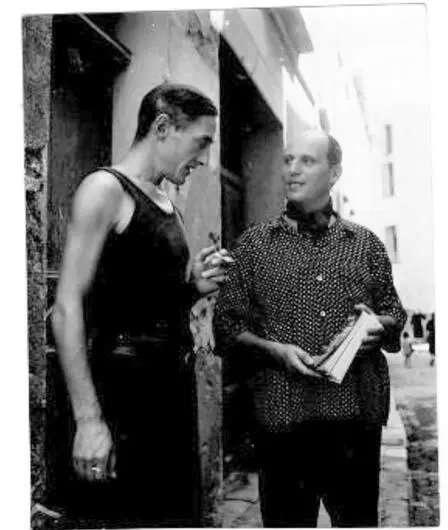
Patrick and Willy Mucha
The year 1952 opened with the anguished query: ‘Can we live on 10.500 fr a month until July? We will try.’
For over two years they frequently went hungry. Having cooked a modest feast for St Patrick’s Day in 1951, my mother reflected: ‘We are so used now to very plain living that we cannot eat much at feasts, we have no capacity.’ For everyday diet: ‘We live mainly on new potatoes, fried bread & bread-and-marmalade.’ Much of their modest shopping was conducted across the frontier in Spain, where prices were much lower. This regularly involved my mother’s walking to Port Bou and back: a 34-mile round hike, traversing successive steep rocky ridges.
Читать дальше
